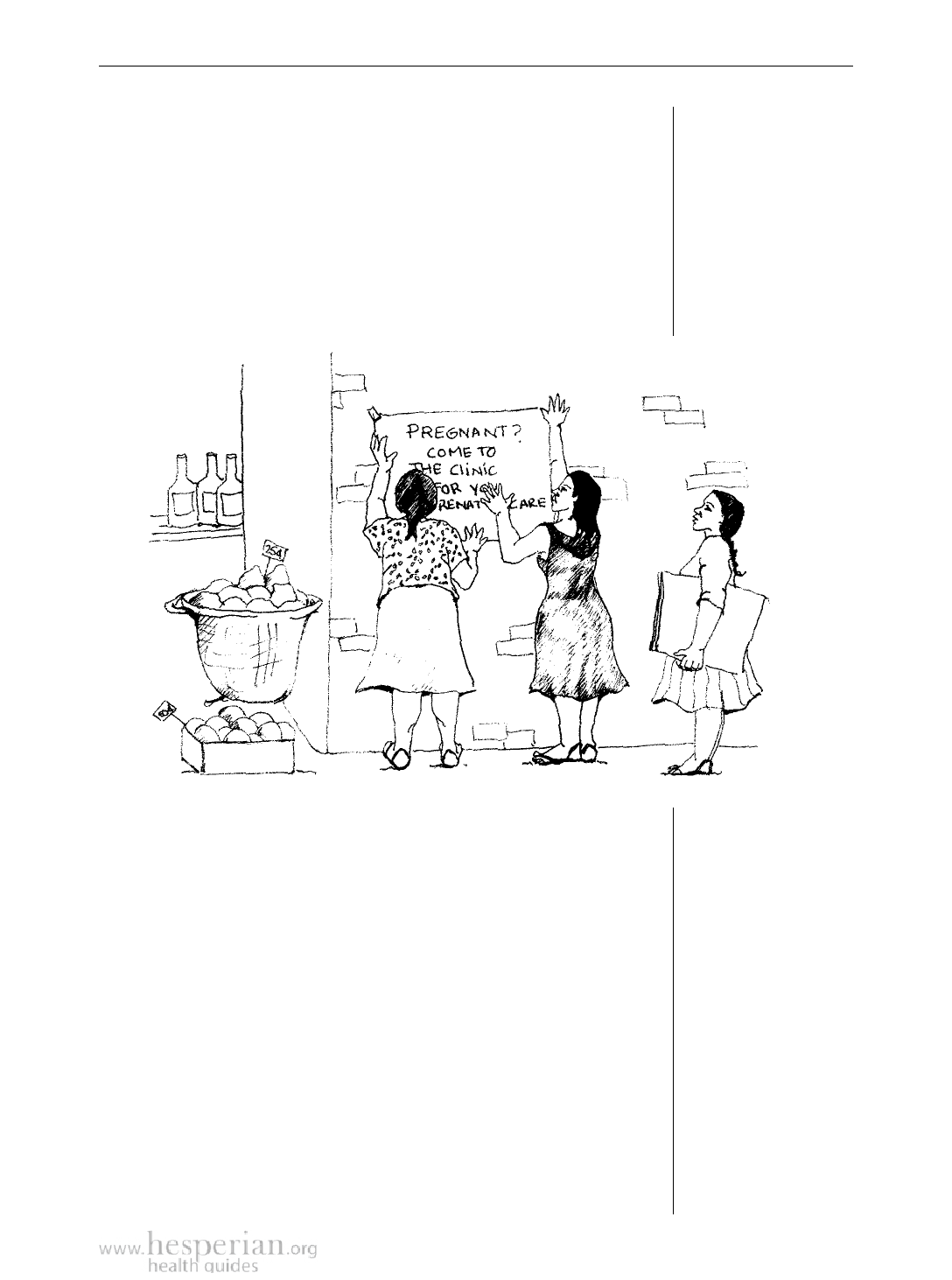
Working for Change 41
Women can also work together to:
• help every member of the community to learn about
women’s health problems. For example, you can organize
a campaign to explain how important it is that women get
good prenatal care. If women and their families know about
women’s health needs, women will be more likely to use
the health services that already exist.They will also be more
likely to demand that new ones—such as better treatment
and screening for cervical and breast cancer—be made
available.
• see how existing health resources can be improved. For
example, if there is already a community midwife, how can
she get training in new skills?
• find new ways to make health care available. It is important
to think about what health services you want to have, and
not just what you have now. So, if there is no health worker
now, how can one be trained and supported? If there is
already a clinic, could it offer new services like workshops
or counseling?
• share the knowledge each woman has about health care.
Women already do much of the ‘health work’ in the
community. For example, it is usually women who care for
the sick, teach children to stay healthy, prepare food, keep
the home and community clean and safe, and help other
women have babies. Through this work, they have learned
many skills that they can use to care for each other and
every member of the community.
Where Women Have No Doctor 2012